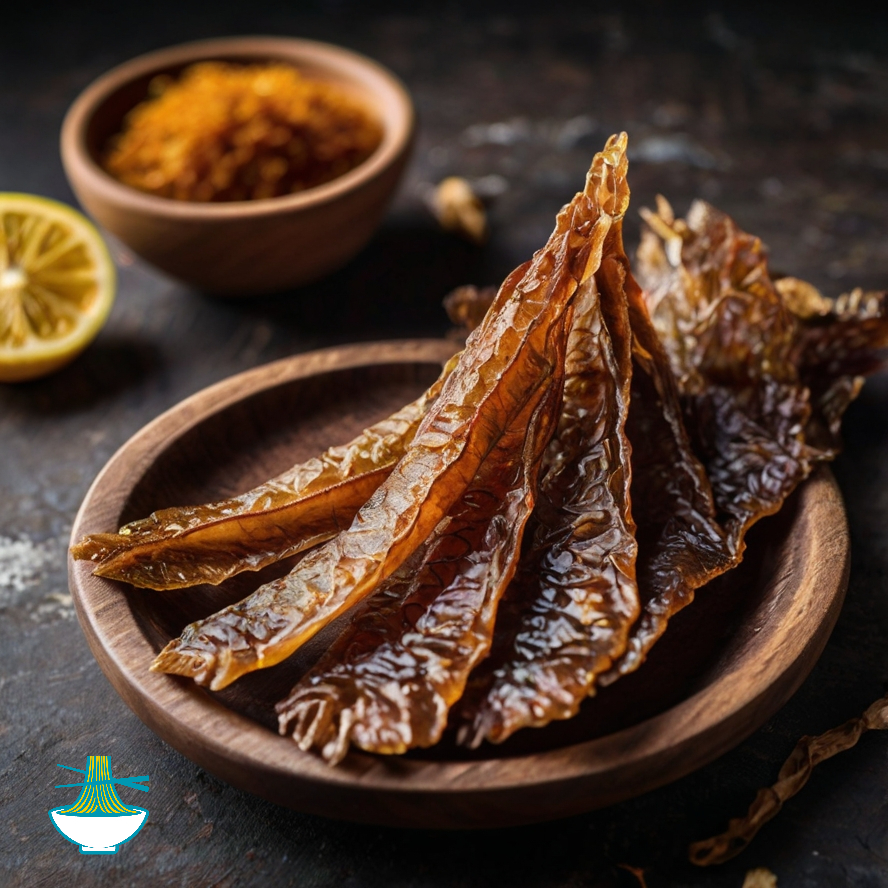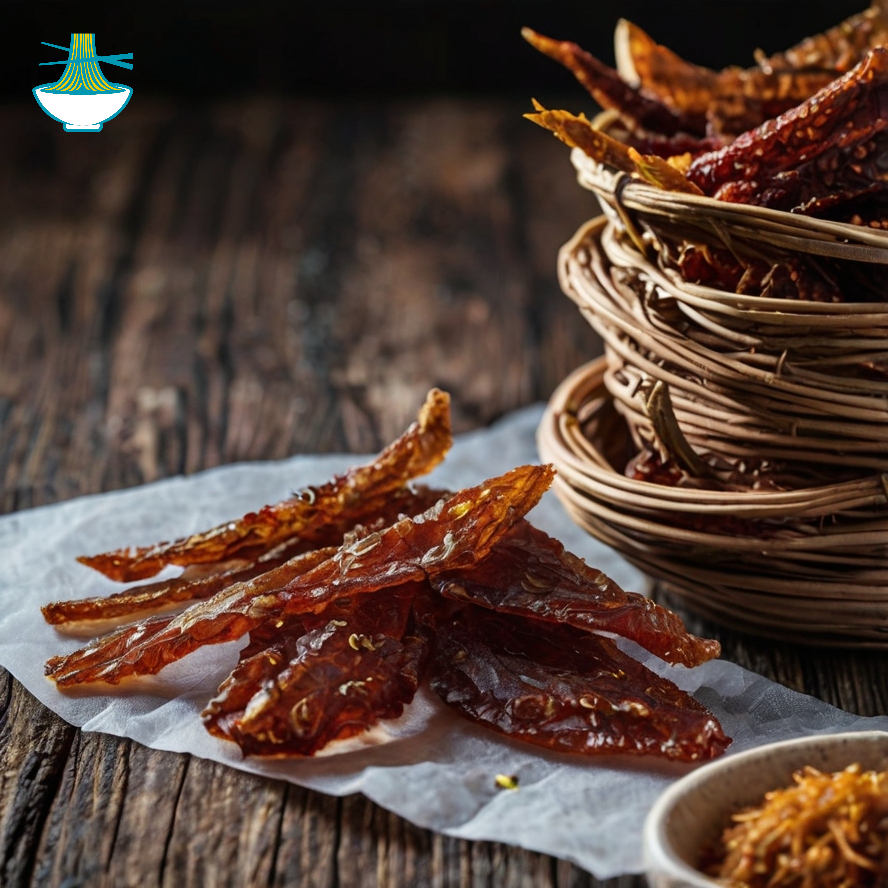Kak, a savory delicacy originating from Asia, is a type of jerky made from dried fish. This traditional recipe has been enjoyed for centuries, prized for its portability, long shelf life, and rich flavor. Typically, the process involves marinating strips of fish in a blend of spices and seasonings before air-drying or smoking them to perfection. The result is a chewy and flavorful snack that's perfect for on-the-go consumption or as a protein-packed addition to meals. With roots deeply embedded in various cultures, kak remains a beloved culinary tradition, offering a taste of history with every bite.
Ingredients:
- Fresh fish fillets (such as salmon, cod, or mackerel)
- Salt
- Black pepper
- Garlic powder
- Soy sauce
- Honey or brown sugar (optional, for sweetness)
Method of Preparation:
1. Begin by slicing the fish fillets into thin strips, approximately 1/4 to 1/2 inch thick.
2. In a bowl, mix together salt, black pepper, garlic powder, and soy sauce to create a marinade. Adjust seasoning according to taste preferences.
3. Place the fish strips into the marinade, ensuring they are evenly coated. Cover the bowl and refrigerate for at least 30 minutes to allow the flavors to infuse.
4. Preheat your oven to a low temperature (around 150-175°C or 300-350°F) or prepare a food dehydrator according to its instructions.
5. Arrange the marinated fish strips on a baking sheet or dehydrator trays, leaving space between each strip for air circulation.
6. If desired, drizzle honey or sprinkle brown sugar over the fish strips for added sweetness.
7. Place the baking sheet or trays into the oven or dehydrator and allow the fish to dry slowly until they become firm and chewy. This process typically takes several hours, depending on the thickness of the strips and the drying method used.
8. Once the fish jerky reaches the desired texture, remove it from the oven or dehydrator and let it cool completely before storing in an airtight container.
Enjoy your homemade kak as a tasty snack, protein-rich addition to salads, or flavorful accompaniment to rice dishes.
Nutrition Value:
1. Fresh Fish Fillets:
- Calories: Varies depending on the type of fish, but typically ranges from 100 to 200 calories per 100 grams.
- Protein: High protein content, ranging from 16 to 25 grams per 100 grams.
- Fat: Typically low in fat, ranging from 1 to 20 grams per 100 grams depending on the type of fish.
- Omega-3 Fatty Acids: Rich source, especially in fatty fish like salmon and mackerel, beneficial for heart health and brain function.
- Vitamins and Minerals: Rich in vitamins B12, D, and minerals such as selenium and phosphorus.
- Nutritional Benefits: High-quality protein source, essential fatty acids for overall health, promotes heart health, supports brain function, and provides various vitamins and minerals necessary for overall well-being.
2. Salt:
- Sodium: 1 teaspoon (about 6 grams) of table salt contains approximately 2300 milligrams of sodium.
- Nutritional Benefits: Sodium is essential for maintaining fluid balance, nerve function, and muscle contractions in the body. However, excessive sodium intake can contribute to high blood pressure and cardiovascular issues, so moderation is key.
3. Black Pepper:
- Calories: Negligible, as it is used in small amounts.
- Nutritional Benefits: Contains piperine, a compound that may enhance digestion and nutrient absorption. Black pepper also has antioxidant and anti-inflammatory properties.
4. Garlic Powder:
- Calories: Approximately 10 calories per teaspoon (2.8 grams).
- Carbohydrates: About 2 grams per teaspoon.
- Protein: About 0.5 grams per teaspoon.
- Fat: Negligible.
- Nutritional Benefits: Rich in allicin, a compound with antibacterial and antiviral properties. Garlic also contains antioxidants and may have benefits for heart health and immune function.
5. Soy Sauce:
- Calories: Approximately 10 calories per tablespoon (15 grams).
- Carbohydrates: About 1 gram per tablespoon.
- Protein: About 1 gram per tablespoon.
- Fat: Negligible.
- Sodium: Varies depending on the brand, but typically high due to its salt content.
- Nutritional Benefits: Contains essential amino acids, provides a savory flavor to dishes, and may have potential health benefits such as improved heart health and reduced risk of certain cancers.
6. Honey or Brown Sugar (Optional):
- Calories: Approximately 64 calories per tablespoon (21 grams) for honey and 52 calories per tablespoon (13 grams) for brown sugar.
- Carbohydrates: Honey - about 17 grams per tablespoon; Brown sugar - about 13 grams per tablespoon.
- Protein: Negligible.
- Fat: Negligible.
- Nutritional Benefits: Provides sweetness to the jerky, but should be used in moderation due to its high sugar content. Honey contains antioxidants and has antimicrobial properties, while brown sugar retains some minerals from the molasses.


Comments